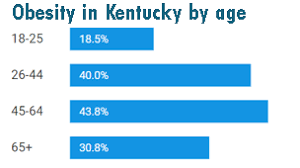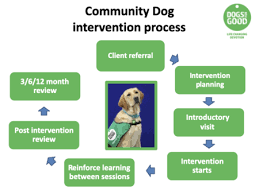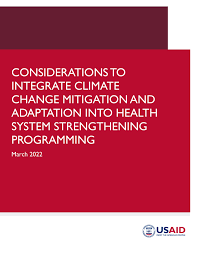Tag Archives: population
Adult obesity in Kentucky. 2022 Best

This paper explores adult obesity in Kentucky. As with all projects, you should think how you, as a nurse, function in the following roles: detective, scientist, and manager of the healing environment.
Adult obesity in Kentucky.
Topic: population: adult obesity in Kentucky. You will develop a project within a practice setting that allows you to develop these leadership skills. You will identify a problem area in a practice setting that you specifically want to address (e.g., practice, policy, population, education) that aligns with organizational priorities. You will focus on a real-life solution for the problem. You should choose a topic that is timely, manageable, and realistic to the current healthcare environment. As with all projects, you should think how you, as a nurse, function in the following roles: detective, scientist, and manager of the healing environment.
Adult obesity in Kentucky.
REQUIREMENTS You must use the rubric to direct the creation of your submission because it provides detailed criteria that will be used to evaluate your work. Each requirement below may be evaluated by more than one rubric aspect. The rubric aspect titles may contain hyperlinks to relevant portions of the course. Note: Any information that would be considered confidential, proprietary, or personal in nature should not be included. Do not include the actual names of people, stakeholders, or other personally identifiable information. Fictional names should be used. Also, agency-specific data, including financial information, should not be included but should be addressed in a general fashion as appropriate.
Adult obesity in Kentucky.
A. Develop a written proposal by doing the following: 1. Identify a problem or issue related to practice, policy, population, or education that aligns with the organizational priorities you seek to solve. a. Explain the problem or issue, including why it is applicable to the area of practice you chose and the healthcare environment. 2. Discuss your investigation of the problem or issue. a. Provide evidence to substantiate the problem or issue (e.g., organizational assessment, national source documents, evidence from a stakeholder). 3. Analyze the state of the situation using current data. a. Analyze areas that might be contributing to the problem or issue.
Adult obesity in Kentucky.
4. Propose a solution or innovation for the problem or issue. a. Justify your proposed solution or innovation based on the results of your investigation and analysis. 5. Recommend resources to implement your proposed solution or innovation. Include a cost-benefit analysis of your proposed solution or innovation. 6. Provide a timeline for implementation based on your proposal. 7. Discuss why each key stakeholder or partner is important for the implementation of the solution or innovation. a. Summarize your engagement with the key stakeholders or partners, including the input and feedback you received.
Adult obesity in Kentucky.
b. Discuss how you intend to work with those key stakeholders or partners in order to achieve success. 8. Discuss how your proposed solution or innovation could be implemented, including how the implementation could be evaluated for success. B. Explain how you fulfilled the following roles during your process of investigation and proposal development: 1. scientist 2. detective 3. manager of the healing environment C. Acknowledge sources, using APA-formatted in-text citations and references, for content that is quoted, paraphrased, or summarized. D. Demonstrate professional communication in the content and presentation of your submission. https://youtu.be/SMS3EtZMp9E
Additional Files
Animal Assisted Interventions. 2022 Best

This paper explores the field of animal assisted interventions. Students should think about the type of AAI, along with the animal species and population they are most interested in. One example would be pet visitation (AAA) with dogs in a children’s hospital.
Animal Assisted Interventions.
This paper will provide the opportunity for students to explore and learn more about a special area of interest to them within the field of Animal-Assisted Interventions. Students should think about the type of AAI, along with the animal species and population they are most interested in. One example would be pet visitation (AAA) with dogs in a children’s hospital. Another example would be AAT with horses and youth at risk. Students are encouraged to choose a topic that relates to their own current (or planned future) scope of practice. For example, if you are a teaching professional, you could research the animal and population of your choice, working within Animal Assisted Education (AAE).
Animal Assisted Interventions.
Using a minimum of four credible resources (scholarly primary or secondary sources) review and write a reflection on the information you have gathered relating to this particular topic. You may also choose to interview someone in your community who is working with animals to help people, as a part of your research. Your paper should include the following: • Clear identification and definition of the area of interest and animal species chosen • Clear identification and description of the type of animal assisted intervention it falls under • Clear identification of the population of interest. https://youtu.be/VgXYFnwguj8
Animal Assisted Interventions.
Description of why you chose that area of interest and animal species • Clear presentation of your research findings • Discussion on how your research affected your understanding of your area of interest The paper should also abide by the following criteria: • Meet APA 7th edition formatting guidelines • Include cover and reference pages • 4-6 pages in length (not including cover and reference pages) • Submitted as PDF file The reflection paper should also demonstrate an understanding of and a direct tie to the course materials in some way
Additional Files
Global Health Comparison Matrix. 2022 Best

Focusing on the country you selected and the U.S., complete the Global Health Comparison Matrix. Be sure to address the following: • Consider the U.S. national/federal health policies that have been adapted for the global health issue you selected from the WHO global health agenda.
Global Health Comparison Matrix.
Part 1: Global Health Comparison Matrix. Focusing on the country you selected and the U.S., complete the Global Health Comparison Matrix. Be sure to address the following: • Consider the U.S. national/federal health policies that have been adapted for the global health issue you selected from the WHO global health agenda. Compare these policies to the additional country you selected for study. 45 (45%) – 50 (50%) Response provides a clear and accurate explanation of the strengths and weaknesses of policies in the U.S. and another country. Response provides a clear and accurate explanation of how the social determinants of health impact the issue in the U.S. and in another country. Specific examples are provided.
Global Health Comparison Matrix.
Response provides a clear and accurate explanation of how the governments of the two countries address cost, quality, and access related to the issue. Response provides a clear and accurate explanation of how the policy in each of the two countries impacts the health of the global population. Detailed and accurate supporting examples are provided. Response provides a clear and complete explanation of how the policies in each country impact the role of the nurse. Response provides an accurate and detailed explanation of how the global health issues impact local healthcare organizations and policies in each of the two countries.
Global Health Comparison Matrix.
40 (40%) – 44 (44%) Response provides an explanation of the strengths and weaknesses of policies in the U.S. and another country. Response provides an explanation of how the social determinants of health impact the issue in the U.S. and in another country. Specific examples may be provided. Response provides an explanation of how the governments of the two countries address cost, quality, and access related to the issue. Response provides an explanation of how the policy in each of the two countries impacts the health of the global population. Supporting examples may be provided. Response provides an explanation of how the policies in each country impact the role of the nurse.
Global Health Comparison Matrix.
Response provides an explanation of how the global health issues impact local healthcare organizations and policies in each of the two countries. 35 (35%) – 39 (39%) Explanation of the strengths and weaknesses of policies in the U.S. and another country is vague or inaccurate. Explanation of how the social determinants of health impact the issue in the U.S. and another country, and/or the examples, are vague or inaccurate. Explanation of how the governments of the two countries address cost, quality, and access related to the issue is vague or inaccurate. Explanation of how the policy in each of the two countries impacts the health of the global population, and/or supporting examples, is vague or inaccurate.
Global Health Comparison Matrix.
Explanation of how the policies in each country impact the role of the nurse is vague or incomplete. Explanation of how global health issues impact local healthcare organizations and policies in each of the two countries is vague or inaccurate. 0 (0%) – 34 (34%) Explanation of the strengths and weaknesses of policies in the U.S. and another country is vague and inaccurate, or is missing. Explanation of how the social determinants of health impact the issue in the U.S. and in another country, and the examples, are vague and inaccurate, or is missing. https://youtu.be/W2aD_yERwLI
Global Health Comparison Matrix.
Explanation of how the governments of the two countries address cost, quality, and access related to the issue is vague and inaccurate, or is missing. Explanation of how the policy in each of the two countries impacts the global population, and supporting examples, is missing. Explanation of how the policies in each country impact the role of the nurse is vague and inaccurate, or is missing. Explanation of how global health issues impact local healthcare organizations and policies in both countries is missing. The Nurse’s Role in Global Healthcare






